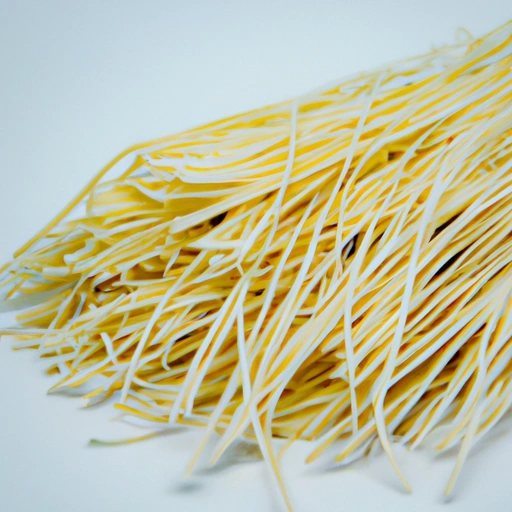Noodle
Description

Noodles are a staple food made from unleavened dough, which is rolled flat and cut, stretched or extruded into long strips or strings. They are a traditional ingredient in a variety of dishes across the globe, including Asian, American, and European cuisines. Noodles can be made from a range of flours, including those made from wheat, rice, and legumes. They come in various shapes, sizes, and textures, and can be prepared in countless ways—boiled, fried, baked, or served cold in salads.
Common uses
Noodles are commonly used as a primary ingredient in soups, stir-fries, salads, and as a base for sauces and other toppings. They are adaptable and can be seasoned or flavored in numerous ways to suit different palates and dishes.
Nutritional value
Calories
A typical serving of cooked noodles (about 1 cup or approximately 160 grams) can provide around 220 calories.
Protein
That same serving size usually contains about 7 grams of protein, though this can vary with the type of noodle.
Fat
Noodles generally contain a minimal amount of fat, averaging around 3 grams per serving.
Carbohydrates
Carbohydrates are abundant in noodles, with a serving containing about 40 grams, primarily in the form of starches.
Vitamins
Noodles can be a source of B vitamins, especially if they are enriched. Whole grain varieties may contain higher levels of B-complex vitamins.
Minerals
Depending on the ingredients used, noodles can also provide minerals such as iron, magnesium, and selenium.
Health benefits
Whole grain noodles are a good source of dietary fiber which can help with digestion and provide a feeling of fullness. The protein content in noodles can be beneficial for muscle repair and growth.
Potential risks
Overconsumption of refined noodles can lead to high blood sugar levels and potentially weight gain. Gluten-containing noodles are not suitable for individuals with celiac disease or gluten sensitivity.
Common recipes
Popular noodle dishes include Italian pastas such as spaghetti bolognese, Asian dishes like pad thai, and Japanese ramen.
Cooking methods
Noodles can be boiled, stir-fried, deep-fried, or incorporated into soups and stews.
Pairing with other ingredients
Noodles pair well with a variety of proteins, vegetables, and sauces, making them incredibly versatile in the culinary world.
Summary
Noodles are a diverse and essential ingredient in many culinary traditions. They provide energy and nutrients and can be incorporated into a wide array of dishes. Though they offer health benefits, moderation is key to enjoying noodles as part of a balanced diet.